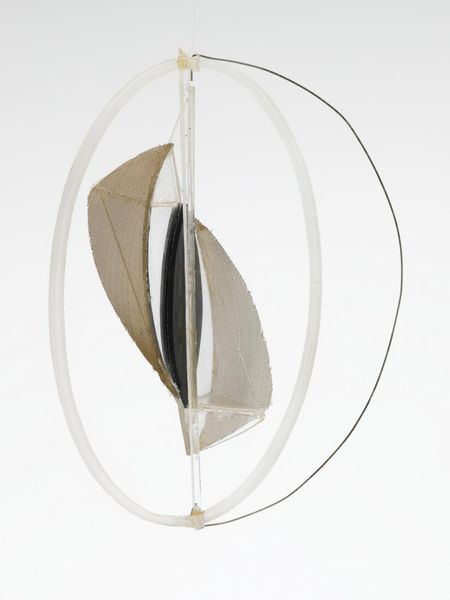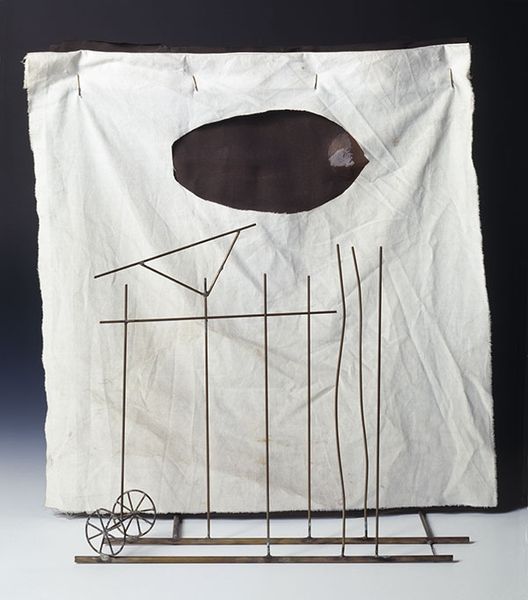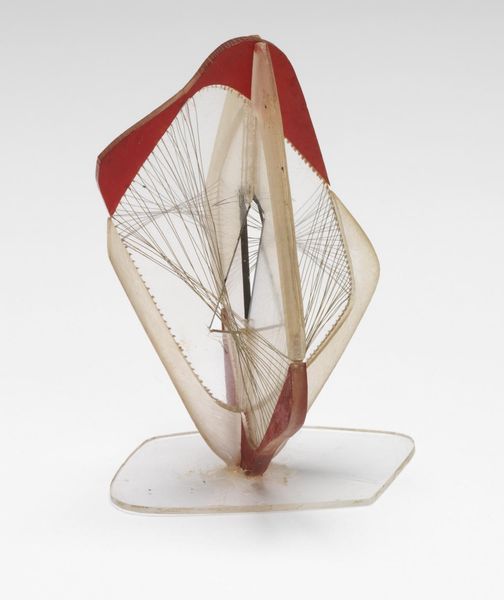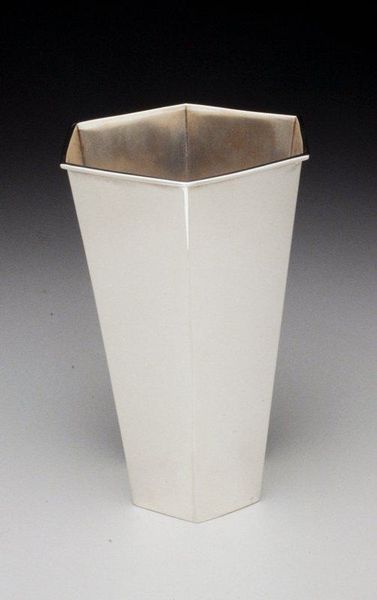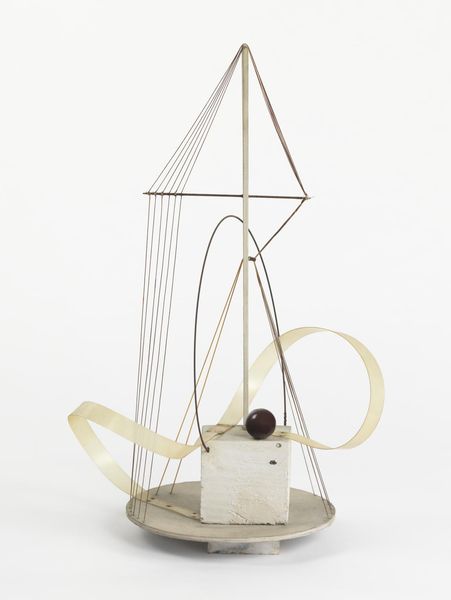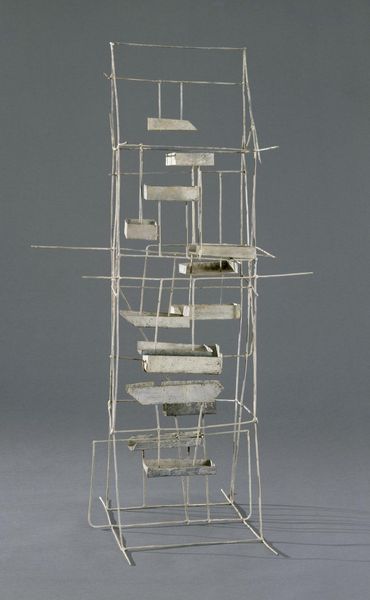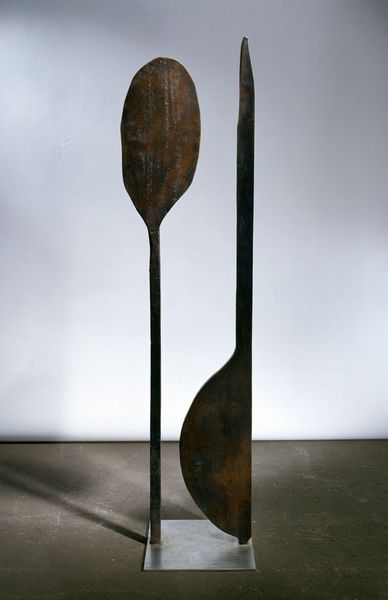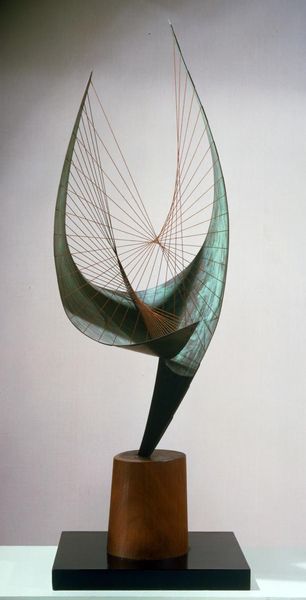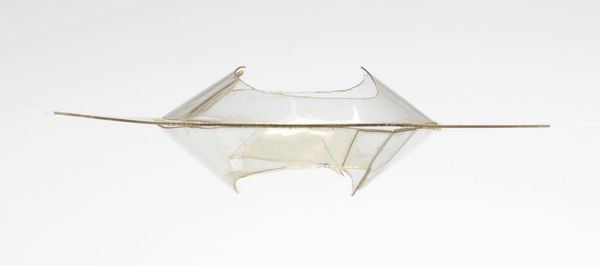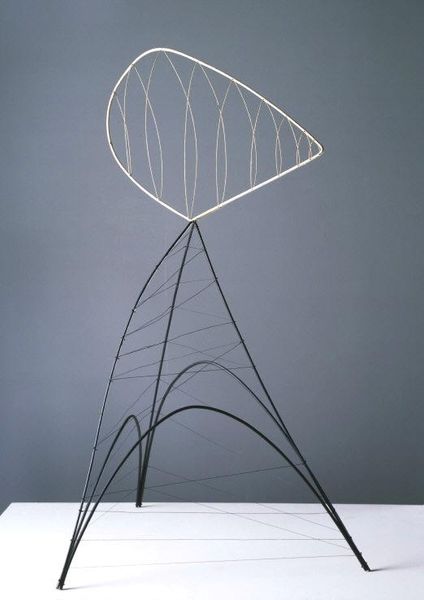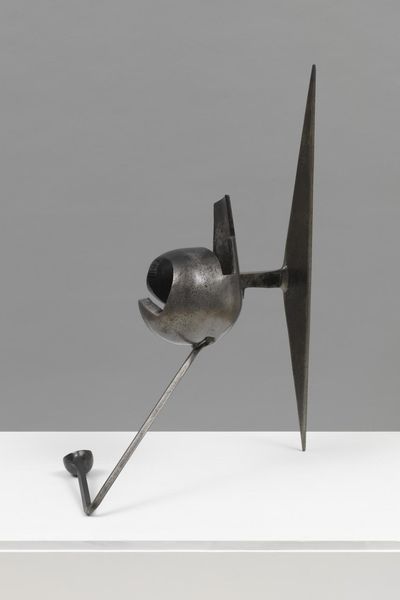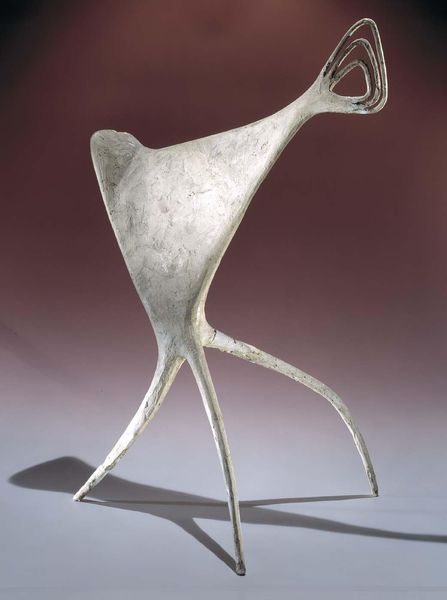
Copyright: Fausto Melotti,Fair Use
Editor: Here we have Fausto Melotti’s "La rivoluzione dogmatica," created in 1969 using mixed media including metal. The structure gives me a sense of both fragility and precision. What do you see when you look at this, especially regarding its formal construction? Curator: Formally, I'm struck by the interplay between the rigid, geometric grid and the more organic, draped elements. The metal framework, with its precise vertical lines, establishes a clear structure. Then, the semi-transparent fabric introduces a sense of ambiguity and movement. Editor: So the contrast creates a visual push and pull? Curator: Precisely. And consider the placement of the circular form at the top. Its solid presence acts as a counterpoint to the linearity of the frame. It arrests our gaze and anchors the composition. Are we meant to think about its role in space? Editor: I suppose, is it supposed to feel like it’s floating? Curator: Exactly, while the brown cloth has similar intentions, its position challenges any reading as just being supported by gravity. Melotti sets up visual relationships that prompt us to question spatial relations and the relationships between the artwork's separate planes. Editor: It’s a deceptively complex interaction of shapes and materials. The arrangement is thoughtful. It all seems quite intentional. Curator: Indeed. By analyzing its visual components, Melotti appears to suggest there’s an intrinsic visual vocabulary that supersedes cultural interpretation. It shows how visual language informs emotion. Editor: Looking at how Melotti balances form and materiality makes me realize I need to focus more on decoding artworks using fundamental visual elements, especially when thinking about abstract forms like this.
Comments
No comments
Be the first to comment and join the conversation on the ultimate creative platform.
